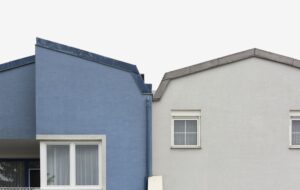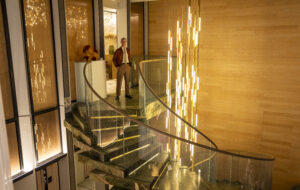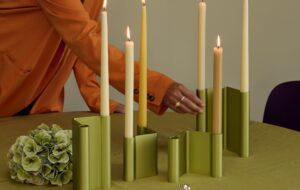


words Kieran Long
Guerrilla Retailing means setting up temporary, ad-hoc shops in unlikely locations, and it’s being used by fashion label Comme des Garcons to infiltrate parts of 20 cities that are off the haute couture radar.
The guerrilla shops have their own manifesto, with strict rules including the main pillar – that no guerrilla store will be in place longer than a year, regardless of its commercial performance. Other rules insist that the locations are away from usual commercial centres and are chosen for the richness of their historical or geographical context.
The first shop is in Berlin, and occupies a former bookshop on Chausseestrasse, on the edge of the east Berlin district of Mitte. The raw interior of the shop was barely changed. The unpainted walls reveal traces of previous yellow and pink colour schemes, and a dodgy suspended ceiling and even the bookstore sign remain. While not exactly remote, the neighbourhood is just far enough from the now-gentrified Hackescher Markt and the Friedrichstrasse tourist centre to meet its aim of occupying a marginal piece of the city.
The people behind the shop are architecture student Christian Weinecke, who previously worked for Comme des Garcons in Paris, and web designer Lil Schlichting-Stegemann, and they will be running it for the year it is open. Weinecke says it was intended to echo the feel of a second-hand store: “We used fleamarket furniture, and just water pipes for the hanging rails. What you see in the display of a second-hand store is an aesthetic of randomness, and I think it is very important for the store to have this. The yellow colour of the newly lacquered furniture introduces a new element. The lacquer means that the furniture loses its materiality, and the yellow reflects some of the colours in the walls.”
The clothes are not displayed by line, but are hung in a way that encourages the visitor to search through them at random. The entire stock of the shop is changed every two weeks.
Comme des Garcons owners Adrian Joffe and Rei Kawakubo, who have previously commissioned practices like Future Systems and Kitchen Rogers Design for their stores, were involved in selecting the store’s location, but apart from that were open-minded about the final form it took, encouraging the expression of a local character. The total budget for the store was $2500 (£1390) for the 700sqft space, and the form is likely to change over the course of the year.
“We want other people to give their energy to the place,” says Weinecke. “For the opening we had the owner of an Indonesian restaurant come in and give us a mobile, and some street artists gave us some pieces.”
The next guerrilla store will open in April in Barcelona, and stores are planned for Brooklyn in New York, Stockholm, Warsaw, Ljubljana and Vilnius.
















